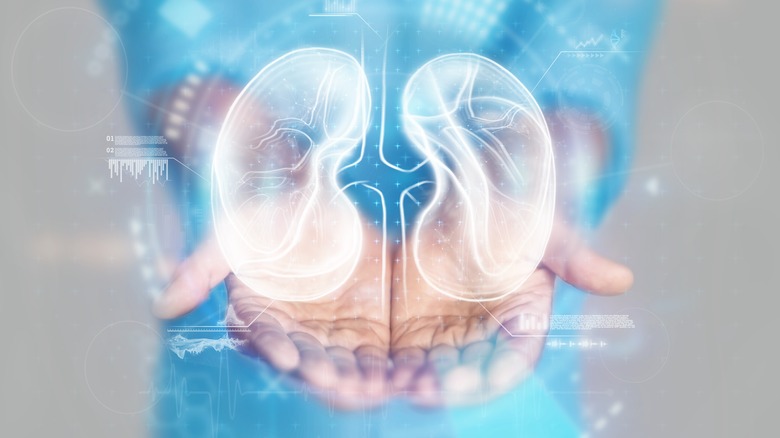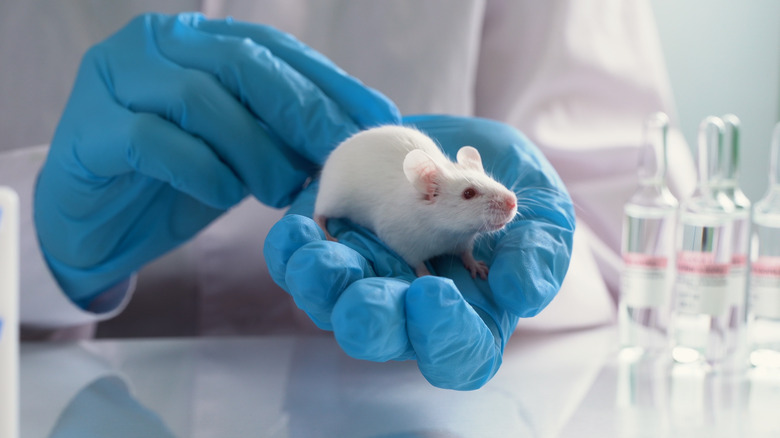Researchers May Now Know Why Kidney Disease Is Typically Harder On Men
Women and female mice recover from acute kidney injury (AKI) better than their male counterparts, and until now, the reason for that has remained a mystery. However, in a new study published by Cell Reports, Duke Health researchers believe they have found the answer.
AKI is a sudden episode of kidney failure or damage that causes a build-up of waste in the bloodstream. It typically occurs as the result of a lack of blood flow to the kidneys, a blockage in the urinary tract, or direct kidney damage brought on by infection, certain medication, toxins, or autoimmune conditions (per Yale Medicine).
In the newly released murine study, researchers determined that the female advantage in cases of AKI occurs at the molecular level, protecting them from ferroptosis — a recently discovered type of cell death that occurs within injured kidneys, according to a Duke Health press release. The findings point to the NRF2 antioxidant pathway as the mechanism that gives females the upper hand against cell death within the kidneys, a protection that the study author, Dr. Tomokazu Souma, says can be exploited to benefit both men and women.
"Kidney disease afflicts more than 850 million people worldwide every year, so it's important to understand why female kidneys are more protected from these acute and chronic injuries," explained Dr. Souma. "Our study is a step toward identifying the causes and suggests that this female resilience could be therapeutically harnessed to improve kidney repair in both sexes."
Activity in the NRF2 providing protection
Through RNA analysis, researchers found that the NRF2 pathway in female mice was extremely active, providing vigilant protection against cell death. In male mice, however, it was determined that the hormone testosterone was responsible for reducing activity within the NRF2, exacerbating cell death rather than preventing it (per Duke Health).
Through further experimentation, the team was able to establish that NRF2 could be activated chemically, and that doing so granted males the same protection from ferroptosis — a massive feat indicating that therapies targeting NRF2 could prevent failed renal repair in patients with AKI.
While U.S. News points out that the results of animal studies don't always translate to the human anatomy, Dr. Souma remains confident.
"By identifying the mechanism in which the female hormonal environment protects and the male hormonal environment aggravates acute and chronic kidney injuries, we believe there is strong potential to boost the resilience of kidneys," said Souma.


